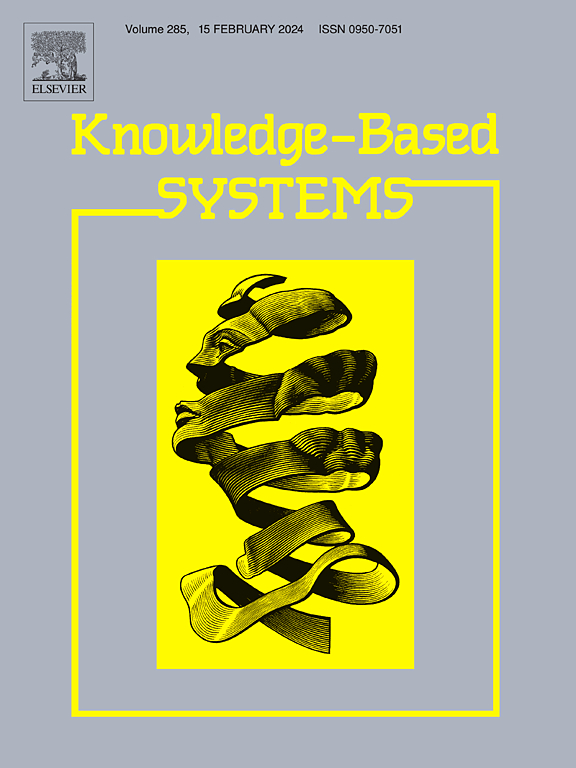IReGNN: Implicit review-enhanced graph neural network for explainable recommendation
IF 7.2
1区 计算机科学
Q1 COMPUTER SCIENCE, ARTIFICIAL INTELLIGENCE
引用次数: 0
Abstract
Explainable recommendations can not only recommend items to users but also provide corresponding explanations, which is crucial for enhancing the transparency, credibility, and security of the system. Reviews, as an important information source for explainable recommendations, have received considerable attention. However, existing review-based explainable recommendations focus primarily on exploring user preferences and item features, as well as generating explanations from reviews, overlooking the limitations imposed by review sparsity on model performance. To address this issue, we propose an Implicit Review-enhanced Graph Neural Network (IReGNN) for explainable recommendations. Specifically, we construct a review network and a rating network, respectively. For the review network, we adopt an unsupervised approach to mine different topics of users and items, thereby enhancing node attribute representations. On the other hand, for the rating network, we extract implicit relationships between individuals and generate virtual reviews under the constraint of topics, which can effectively alleviate the data sparsity issue. Finally, we leverage a spatial graph neural network to learn node representations, generating accurate recommendations and high-quality explanations. Through a series of experiments on three publicly available datasets, results demonstrate that IReGNN outperforms eight baseline models in terms of rating prediction and explanation quality. Moreover, our model also has certain advantages in sparse data scenarios. The model and datasets are released at: https://github.com/SamuelZack/IReGNN.git.
求助全文
约1分钟内获得全文
求助全文
来源期刊

Knowledge-Based Systems
工程技术-计算机:人工智能
CiteScore
14.80
自引率
12.50%
发文量
1245
审稿时长
7.8 months
期刊介绍:
Knowledge-Based Systems, an international and interdisciplinary journal in artificial intelligence, publishes original, innovative, and creative research results in the field. It focuses on knowledge-based and other artificial intelligence techniques-based systems. The journal aims to support human prediction and decision-making through data science and computation techniques, provide a balanced coverage of theory and practical study, and encourage the development and implementation of knowledge-based intelligence models, methods, systems, and software tools. Applications in business, government, education, engineering, and healthcare are emphasized.
 求助内容:
求助内容: 应助结果提醒方式:
应助结果提醒方式:


